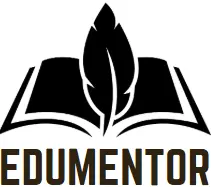An SOP for Scholarships.
A Statement of Purpose (SOP) is a personal essay that:
- Explains why you’re applying for the scholarship & program
- Shows your goals, background, motivation, and potential
- Aligns your vision with the values of the scholarship provider
It’s not just a resume in words — it’s your academic life story with purpose.
🧱 SOP Structure (With Unique Breakdown)
✍️ 1. Introduction: Personal Hook.
Start with a true story or event that shaped your dreams — not generic sentences like “I’ve always wanted to…”
🔹 Examples:
- “As I stood in my flooded village during monsoon season, I knew I wanted to become a civil engineer.”
- “My first computer was assembled from scrap. That day, I realized I wanted to study AI.”
✅ Tips:
- Be emotionally engaging but concise
- Avoid big claims like “I am the best” — be authentic
- Connect your hook to your chosen field
✍️ 2. Academic & Professional Background.
Explain how your studies and experience prepared you for this opportunity.
🔹 Include:
- Degrees, top achievements, GPA (if strong), major subjects
- Research, internships, or volunteer work related to your field
- Challenges you’ve overcome (adds character)
✅ Tips:
- Use quantifiable achievements (“Ranked 2nd in a class of 120”)
- Show growth and learning, not just tasks
- Mention if your university is top-ranked in your country
✍️ 3. Motivation & Career Goals .
Clearly show how the scholarship and course help you achieve your future goals.
🔹 Include:
- Short-term (after graduation) + long-term (5–10 years) goals
- Social impact or relevance in your country/region
- How your goals align with the mission of the scholarship
✅ Tips:
- Mention how you’ll give back to your community
- For development scholarships (like Chevening, DAAD, MEXT), focus on leadership & impact
✍️ 4. This Scholarship & Country.
Show that you’ve done your homework and aren’t applying blindly.
🔹 Include:
- Unique aspects of the program/university (courses, labs, projects)
- How the host country’s system supports your goals
- Specific value of the scholarship community or alumni network
✅ Tips:
- Mention professors, research centers, or partnerships that matter to you
- Don’t copy-paste — personalize for each scholarship
✍️ 5. Conclusion & Commitment (100–150 words)
Reaffirm your goals, gratitude, and readiness to represent the scholarship program.
✅ Tips:
- Be humble but confident
- Reinforce your passion and contribution to society
- End with a strong sentence like:
“I am ready to contribute, learn, and return stronger — not only for myself, but for those I aim to uplift.”
🔑 Golden Rules to Win Scholarships with Your SOP
| DO ✅ | DON’T ❌ |
|---|---|
| Tell your true story | Use clichés like “Since childhood…” |
| Use active voice & strong verbs | Repeat your CV or copy from others |
| Keep it 1,000–1,200 words max | Write too short or too long |
| Focus on “fit” with scholarship | Brag too much or exaggerate |
| Proofread or ask for feedback | Submit without revisions |
🎓 Example Starters (Hooks You Can Adapt)
🧬 Science:
“The first time I looked through a microscope at a living cell, I felt like I had entered a universe unknown.”
🌱 Environment:
“When our family farm suffered its worst drought, I learned the true impact of climate change — and decided to fight it through education.”
💻 Computer Science:
“I built my first mobile app in a village without WiFi. It helped my school digitize attendance using just Bluetooth.”
🏥 Healthcare:
“At 14, I became my grandfather’s caretaker. That experience ignited my resolve to pursue community-based healthcare.”
🛠️ Tools to Help You Write an SOP
| Tool | Use |
|---|---|
| Grammarly | Proofread grammar & tone |
| Hemingway Editor | Make your writing clearer |
| Notion / Google Docs | Organize your drafts & versions |
| ChatGPT | Get help structuring or improving your draft |
| Quillbot | Rephrase awkward sentences |
📌 Checklist Before Submitting
- Did I clearly show why I deserve the scholarship?
- Is the SOP tailored to the scholarship provider’s goals?
- Have I avoided repetition of my CV?
- Did I check grammar, flow, and formatting?
- Have I included specific goals and social impact?



rbigum